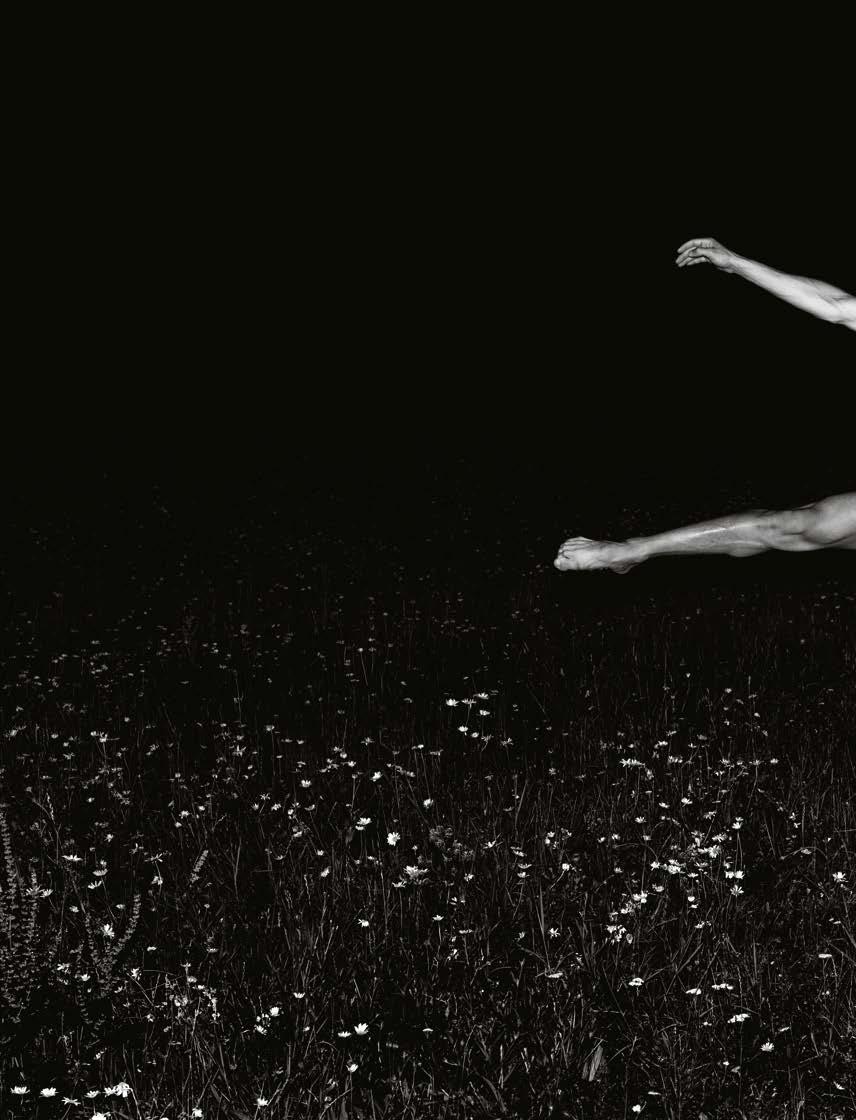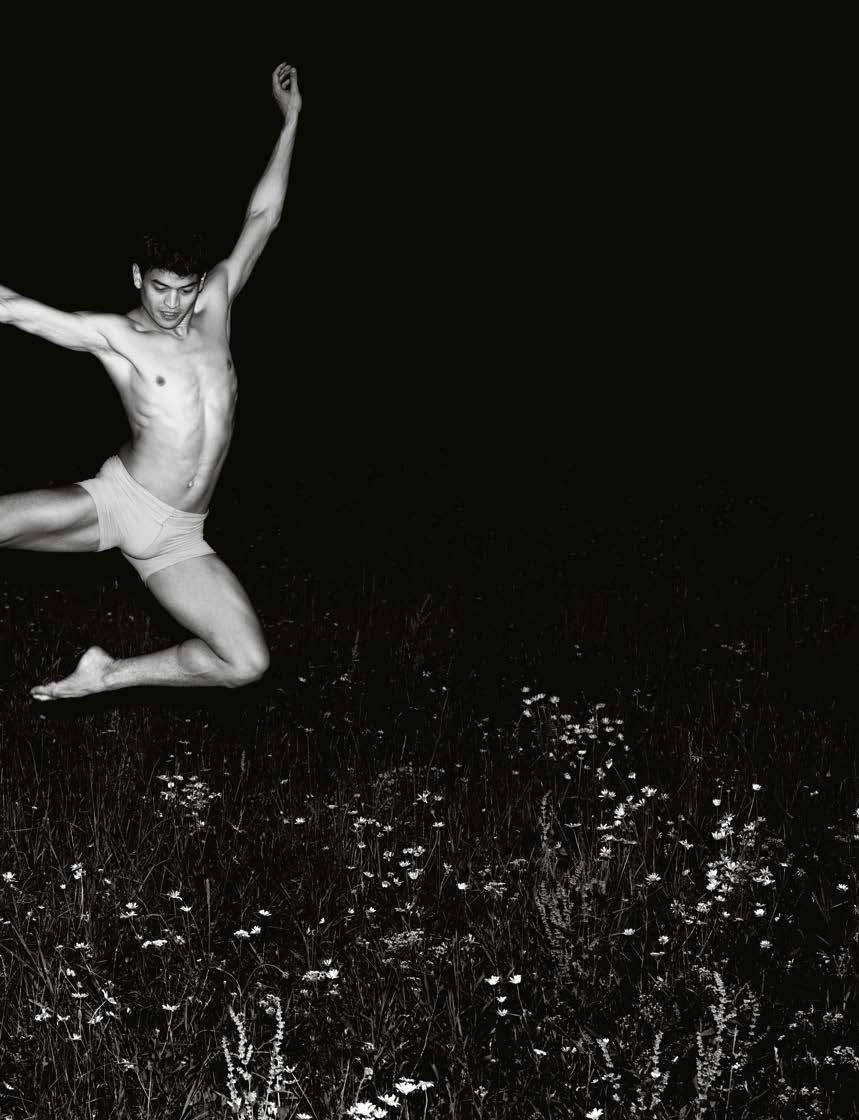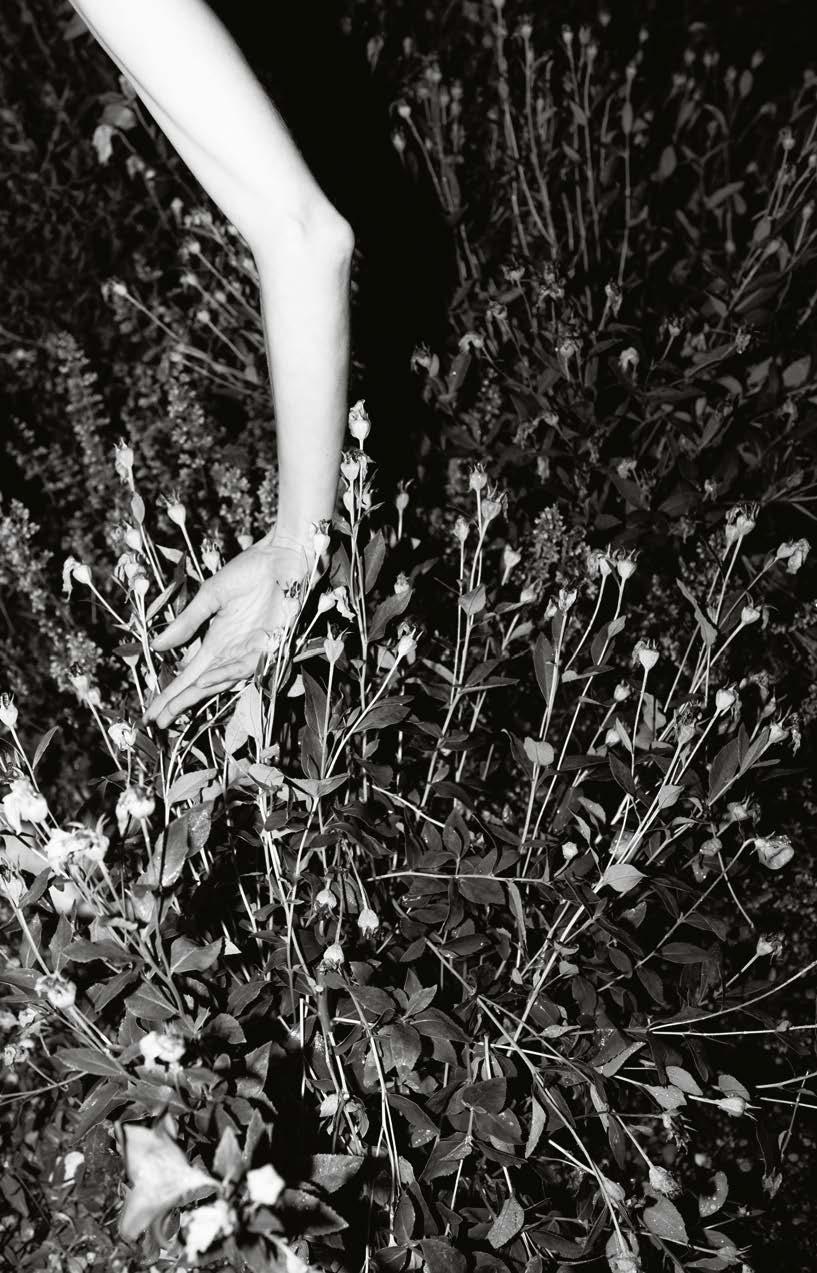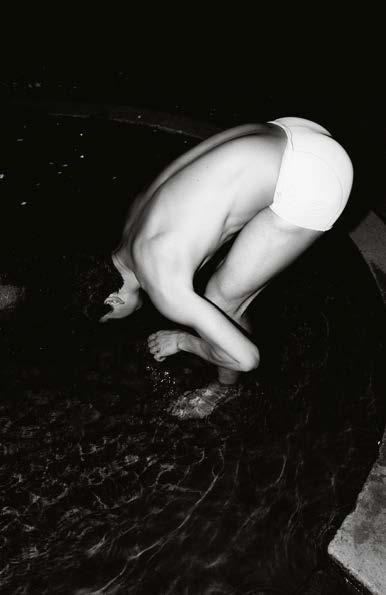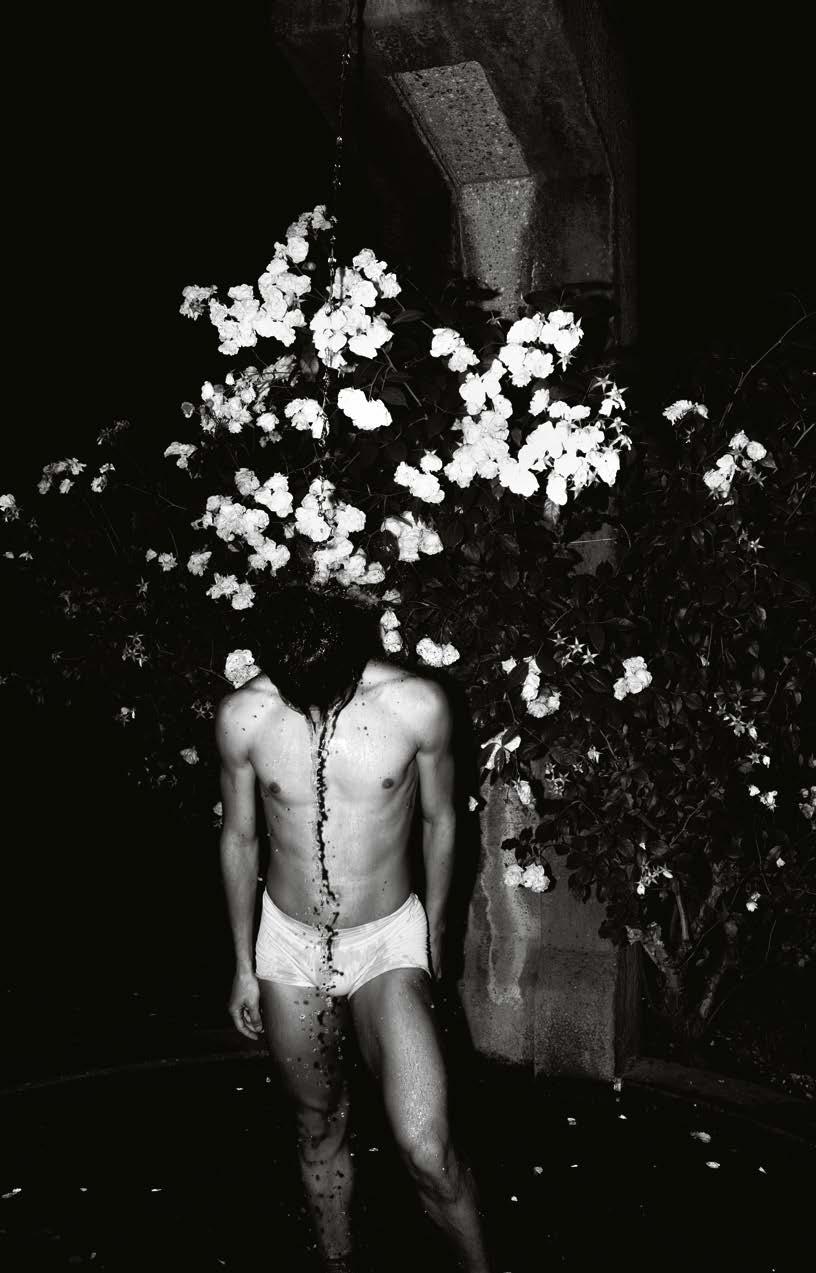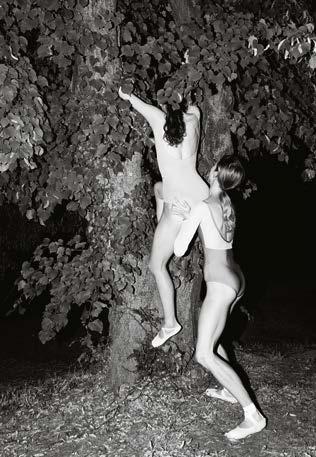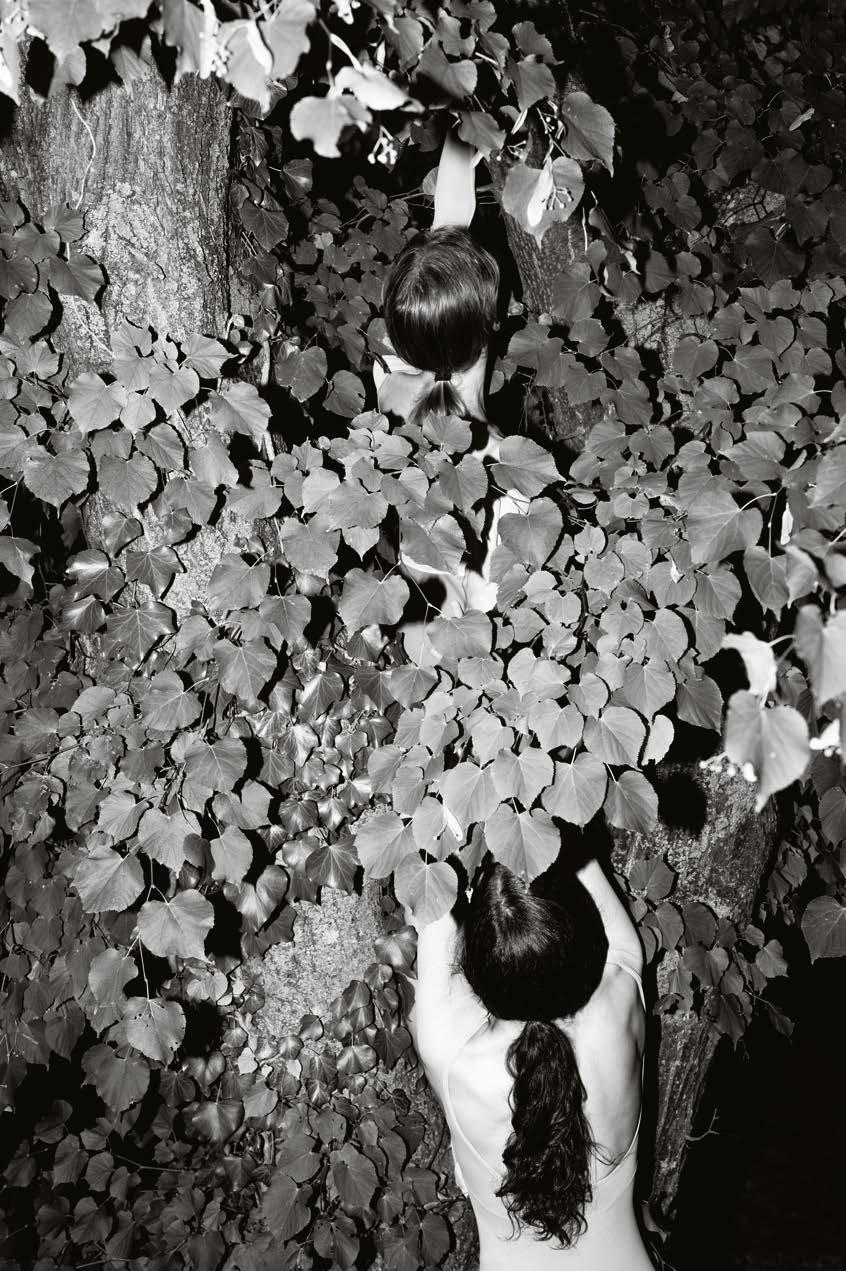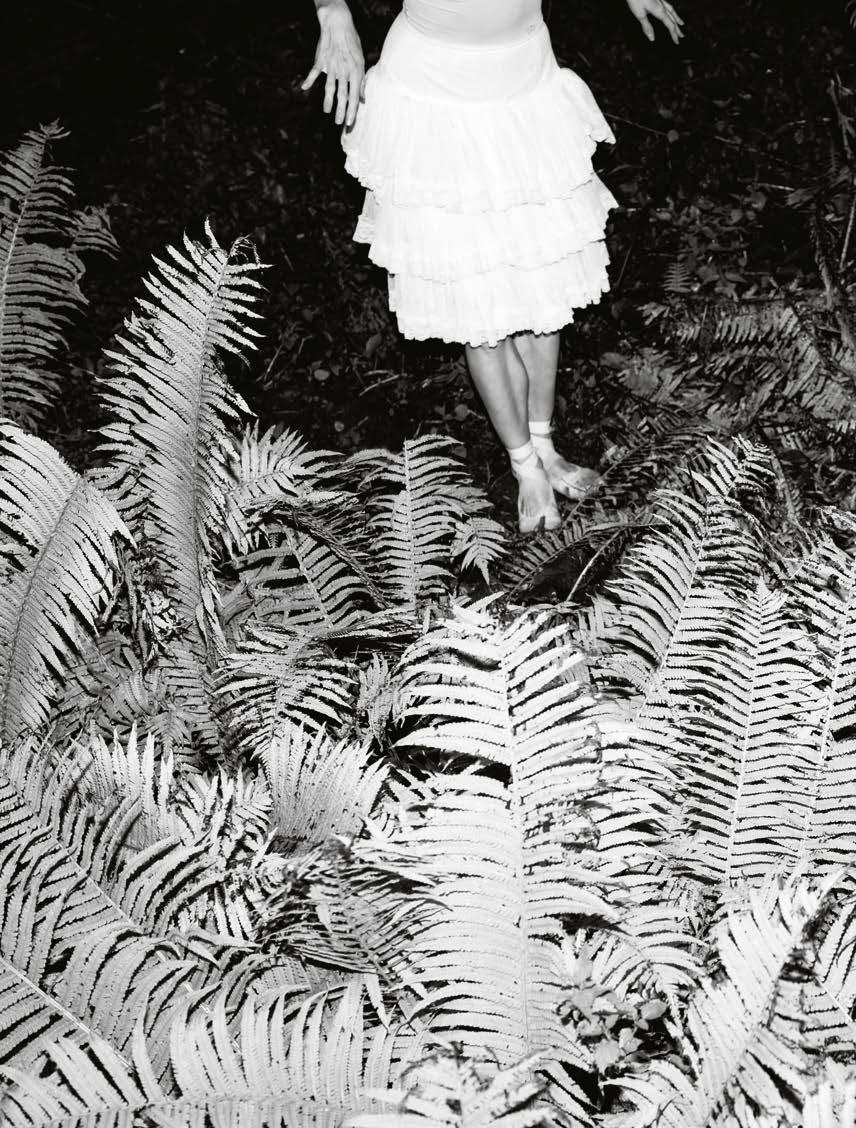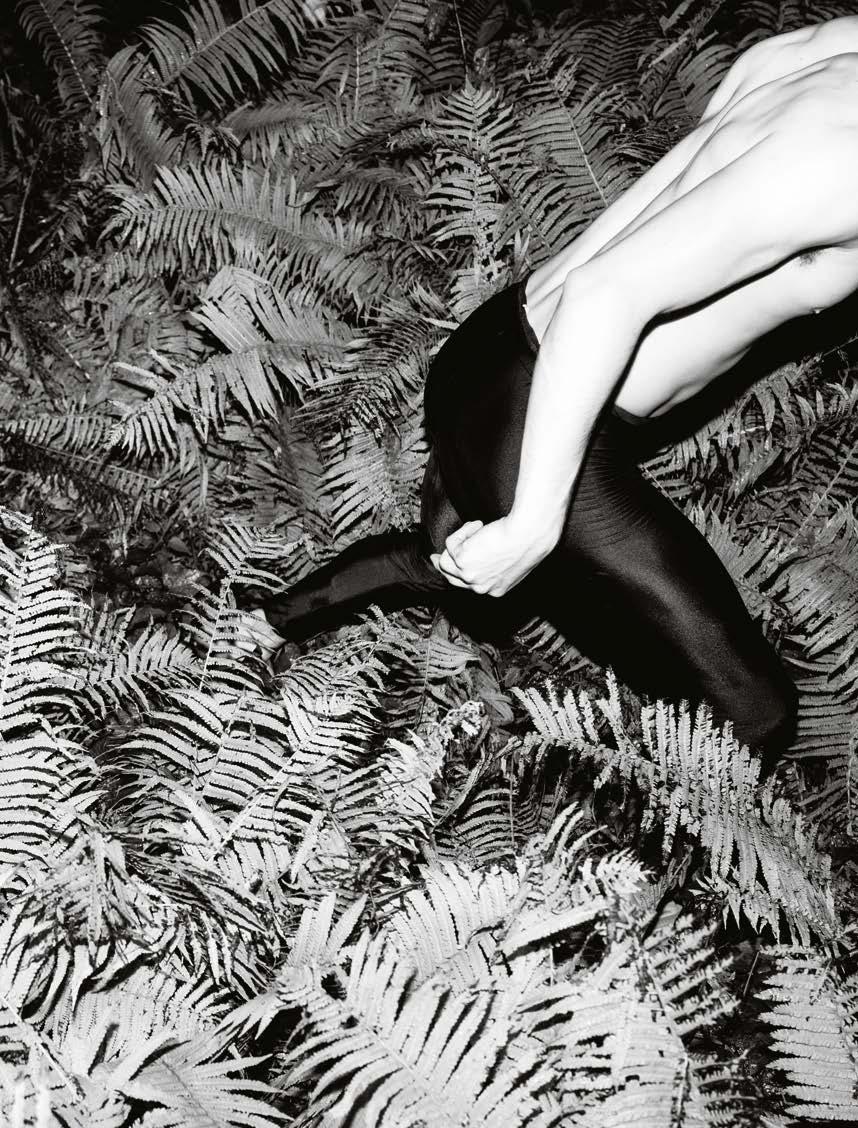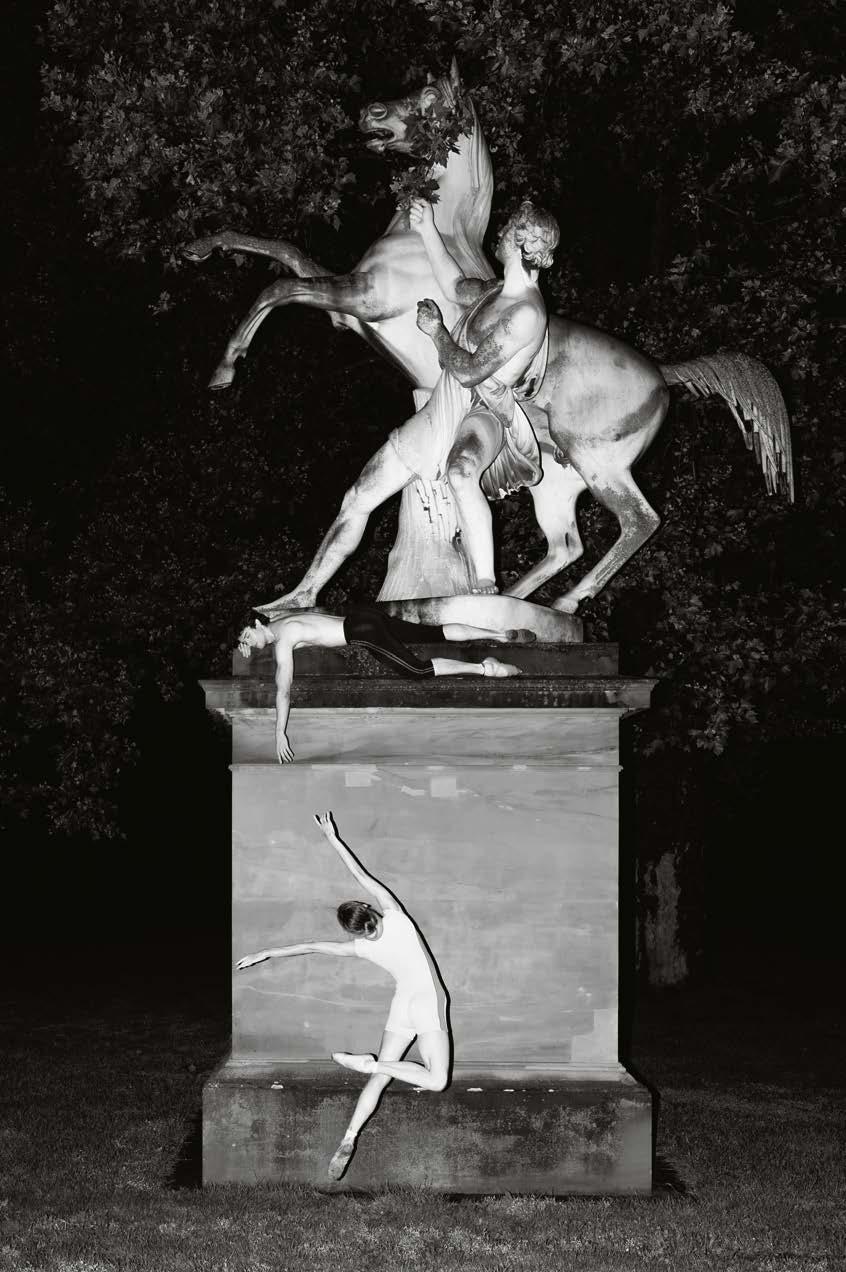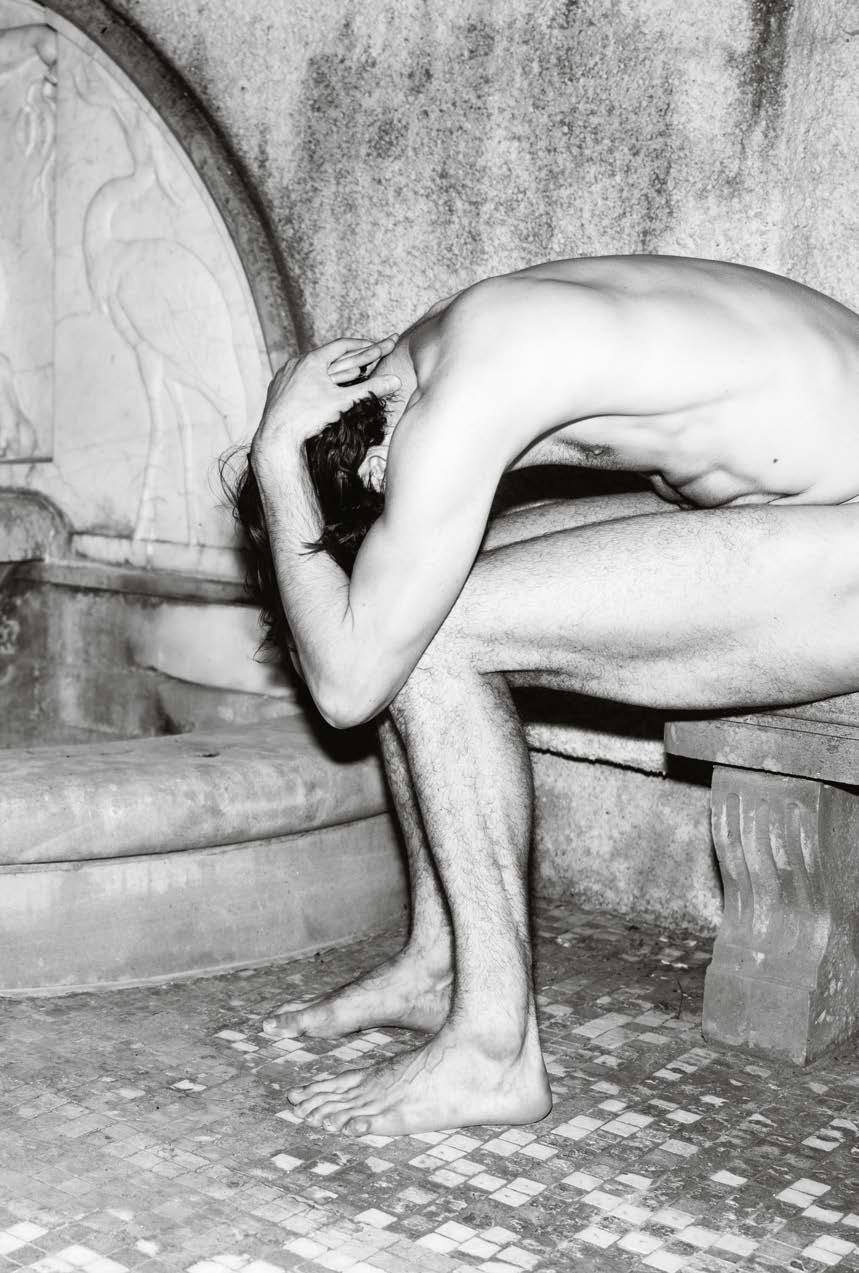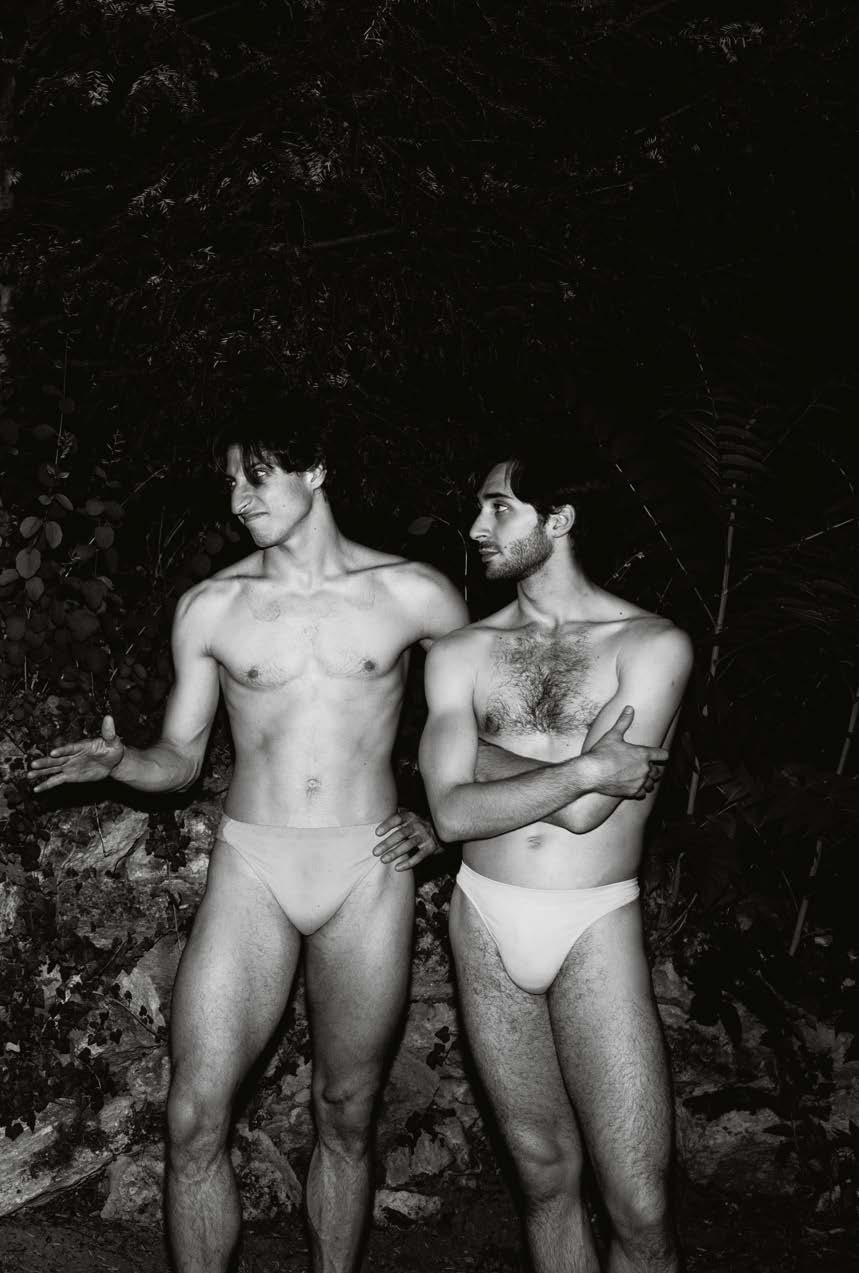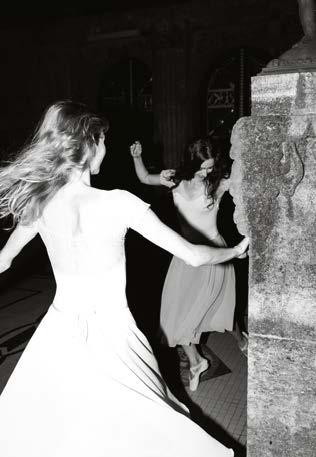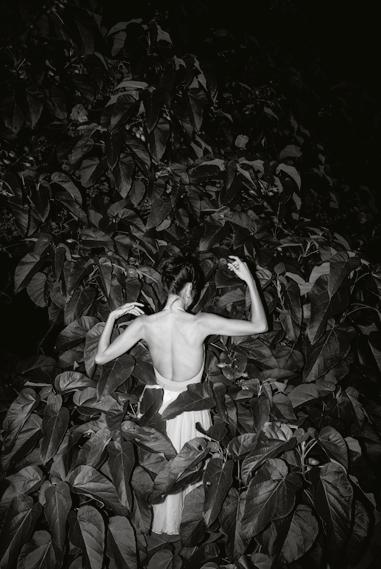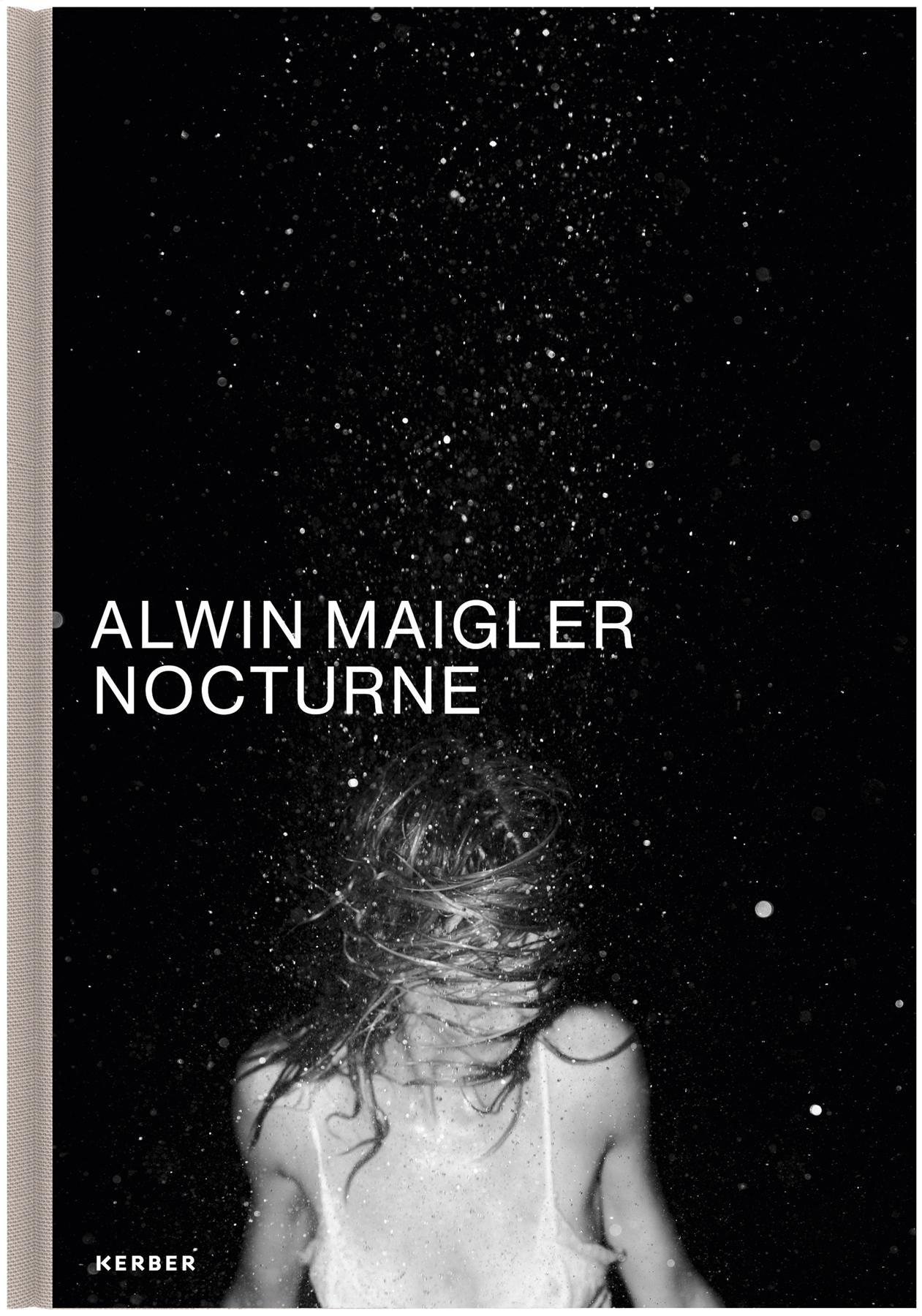

A Marvelous Utopia Simone Klein, Independent Photography Art Advisor
Many things surprise the eye when looking at the wonderful photographs in Alwin Maigler’s Nocturne series. The black and white pictures, taken in the dark of night with a strong flash, show playful interventions by young dancers from the Stuttgart Ballet against the backdrop of parks and gardens.
It quickly becomes clear that the genre of ballet or dance photography has been entirely redefined here. Monumentality, as exemplified by Rudolf Koppitz in his iconic masterpiece Movement Study (1924), is replaced by playful lightness. Expressive expression, as in Charlotte Rudolph’s studies of the dancer Gret Palucca (c. 1922), is replaced by elegant nonchalance. Where André Kertesz, in his famous photograph Satiric Dancer, Paris (1926), depicts the dancer Magda Förstner in a constructivist pose in a strictly composed narrow interior, here the vast universe of nature invites free interaction, and instead of the fin-de-siècle aesthetics of Adolphe de Meyer, who depicted Vaclav Nijinsky in L’après-midi d’un Faune in a manneristic style in 1912, Alwin Maigler finds unpretentious naturalness.
Instead, the photographs in the Nocturne series contain elements of street photography, as masterfully subverted by Gary Winogrand in his famous Women Are Beautiful series (1975), and even voyeuristic approaches, as seen in Weegee’s dramatic documentary crime scene photographs of New York at night in the 1950s.
Alwin Maigler’s photographs are not posed, nor are they taken without technical trickery – they are the result of a direct and congenial collaboration between the photographer and his models, who move completely in the dark, inviting the photographer to be part of their performance. Coincidence plays an important role here, and moreover, Alwin Maigler has no prior background in dance, and thus enters unfamiliar territory himself.
The pictures are testimonies to fleeting moments, a cheerful game, snapshots of life. There is no narrative, but rather a series of film stills that invite the viewer’s own contemplation and interpretation. The viewer is immersed in a world full of lively, creative characters, oscillating between jardin enchantée and Arcadia, in which the dancers playfully move and interact with each other like fairies or gargoyles. There is no search for the perfect pose, but rather a spontaneous reflection of life.
Even the tutu, the accessory par excellence of ballet dancing, undergoes a paradigm shift and becomes the headdress of a statue. The fact that the images are nevertheless full of grace and perfection, making the viewer forget the high level of professionalism and body control of the protagonists, is due to the unusual conception of the series, which leaves creative space for chance and improvisation. The adventure of life takes its course; darkness is overcome; elegance and beauty rule the world! What a marvelous utopia!
